How to sell vintage clothing online and turn a profit: A 6-step guide

That 1970s leather jacket you scored for $20 at a flea market? A vintage fashion lover somewhere is searching for a similar piece – and you could help them get it.
Turning your knack for vintage clothing into a successful business isn’t as complicated as you may think. Especially if you use the right digital channels.
In this guide, we’ll walk you through the key steps to start selling vintage clothing online:
- Finding your unique market position
- Sourcing inventory effectively
- Setting up your online presence
- Creating compelling product listings
- Pricing for profitability
- Marketing to reach the right buyers
Let’s dive in.
What is vintage clothing?
When we talk about vintage clothing, we mean garments that are between 20 and 100 years old. As of 2025, this translates to anything made between 1925 and 2005.
Each piece reflects the fashion, manufacturing techniques, and cultural elements of its period.
For example, this 1950s dress is considered vintage:

And so it this 1990s t-shirt from Thrifted:

Vintage vs retro vs antique
People often mix up vintage, retro, and antique when talking about “old” clothing.
These are all actually quite distinct –and knowing the differences will help you price an item appropriately and target the relevant customer profiles.
Let’s compare them in detail:
| Type | Age | Description | Value |
| Vintage | 20-100 years old | Authentic pieces from past decades, like an original 1970s disco shirt | Can range from affordable to high-value depending on brand, condition, and rarity |
| Antique | Over 100 years old | Rare, delicate pieces requiring specialist care and attention | Often valuable due to age and rarity, typically collected or displayed rather than worn |
| Retro | Less than 20 years old | Modern clothing that imitates vintage styles | Generally priced like regular modern clothing, value typically decreases over time |
For instance, here’s a retro (“vintage-look”) t-shirt by H&M, which can’t be considered vintage:

And here’s an antique gown available for sale on Antique Dress:
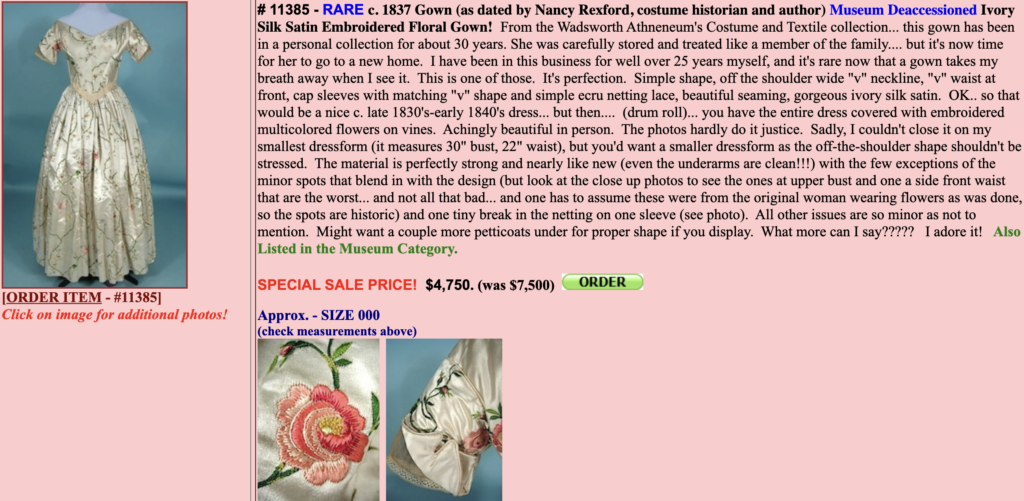
Finally, this Jean Paul Gautier swimsuit is listed on Instagram as vintage:

How to sell vintage clothing online
Starting an online clothing business involves several key steps, from finding the actual vintage pieces to presenting them and reaching potential customers.
Here’s what you’ll need to master:
- Finding vintage clothing items
- Selecting effective platforms for selling them
- Taking photos that showcase authenticity
- Writing converting descriptions
- Setting competitive prices
- Promoting your store
Let’s explore each of them in detail.
1. Build your vintage inventory
Every successful vintage clothing brand needs a steady supply of quality pieces. This means you’ll need to source clothing items and make sure they’re actually vintage, possess the desired quality, and align with your budget.
Finding vintage clothes
The easiest way to start is by checking your own closet and asking family members about vintage pieces they might want to sell.
For example, ‘90s t-shirts are in high demand right now — and so are ‘50s and ‘60s dresses.
Then, try exploring multiple channels – successful vintage sellers like Pure Vintage’s Alex Gilbert combine local hunting with online sourcing.
Consider these places for finding clothing items:
- Independent thrift stores you can build long-term relationships with and access special pieces
- Estate sales in established neighborhoods and online estate auctions (like MaxSold)
- Vintage clothing buy/sell groups and announcements on Facebook
- Flea markets, auctions, and yard sales focused on curated vintage collections
- Online marketplaces like eBay and Etsy where you can find undervalued pieces
- International vintage markets in various locations
- Online and offline vintage wholesalers and rag houses that offer larger lots once you figure out what sells well
For instance, La Vintage offers vintage clothing items in bulk:

Live Auctioneers is a website with online auctions conveniently divided into categories:
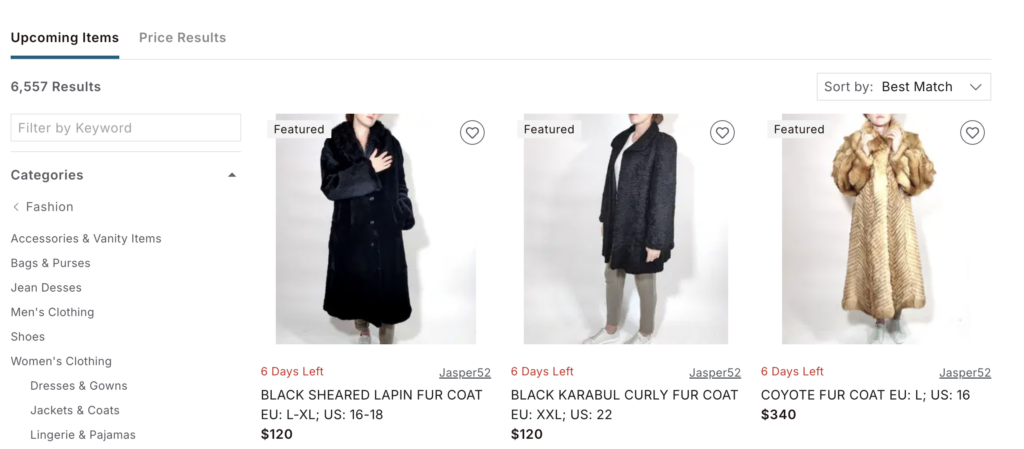
Remember, you don’t need to cover everything immediately. Start with a few reliable sources and expand as you learn what works best for your business.
You might even find a specific specialization you’d like to pursue and focus on relevant providers. For instance, you could curate ‘70s boho pieces or transform vintage items into modern styles – and build a niche audience around it.
Quality control
Before purchasing any piece, verify it’s genuinely vintage by checking:
- Labels and tags – look for vintage label designs and union tags that indicate that the piece was made in a unionized factory, as well as branded logos, specific manufacturing lots, and address labels without zip codes (pre-1963)
- Construction details – vintage pieces might feature metal zippers, hand-stitched linings, or certain stitch types like chain stitching
- Materials and prints specific to certain eras – look for 100% rayon, specific polyester blends, unique print patterns, and high-quality natural fibers like wool, cotton, silk, and linen
- Wear and authenticity markers – genuine vintage clothing will show natural signs of aging, like subtle fabric fading and vintage repair techniques
Make sure to examine every piece for damage, test all closures, and check for odors. Some wear is expected in vintage pieces, but make sure any flaws are reflected in your pricing.
Many vintage clothing sellers overlook “project pieces” –items that need some work but have potential. You can often get these pieces at a discount, repair them, and sell them for a healthy profit.
For example, here’s an Instagram page that offers project pieces for sale:

Proper storage and maintenance
Once you’ve acquired vintage pieces, make sure to adequately store and maintain them to keep their value:
- Store items in a climate-controlled environment to prevent moisture damage and mold growth
- Use padded hangers for structured pieces and store knits flat to prevent stretching
- Place cedar blocks and lavender sachets in storage areas as natural moth deterrents
- Keep items away from direct sunlight to prevent fading and fabric deterioration
- Use special cleaning items like gentle fabric cleaner and soft brushes, and find a trustworthy dry cleaning provider
2. Decide where to sell your vintage clothing
Now that you’ve built your inventory, it’s time to get your pieces in front of potential buyers.
Start by creating your own online vintage clothing store. While marketplaces like Etsy can be a great addition, having your own website should be the foundation of your online business. It will give you complete control over your operations, maximize your profit, and help you build a strong brand.
The best part?
Creating a website is much easier than you think. In fact, you can build a professional online store with just a few clicks using Hostinger’s AI-powered Website Builder.
All you need to do is input the name of your store and some basic information about it. There’s also an option to choose from various fashion website templates and automatically add an online store to your site.
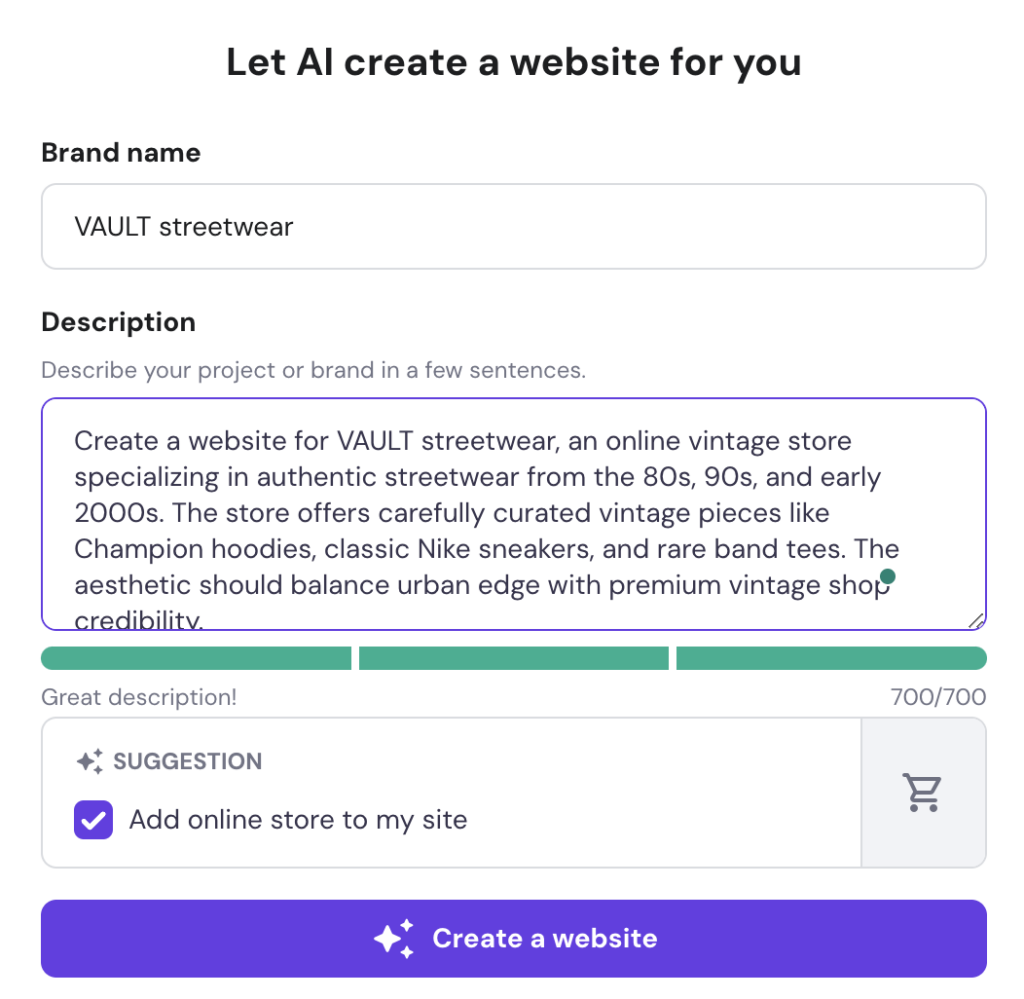
From here, the tool will create a visually appealing and user-friendly ecommerce website for your brand. You can then edit each page and add new content using the drag-and-drop functionality.
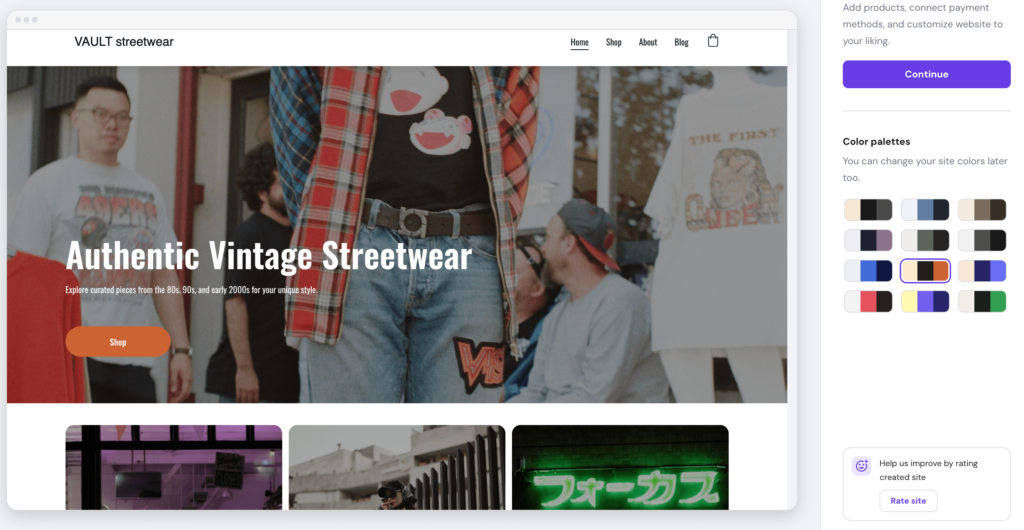
The tool also lets you add products and manage orders within the same interface so you can start selling clothes online right away.
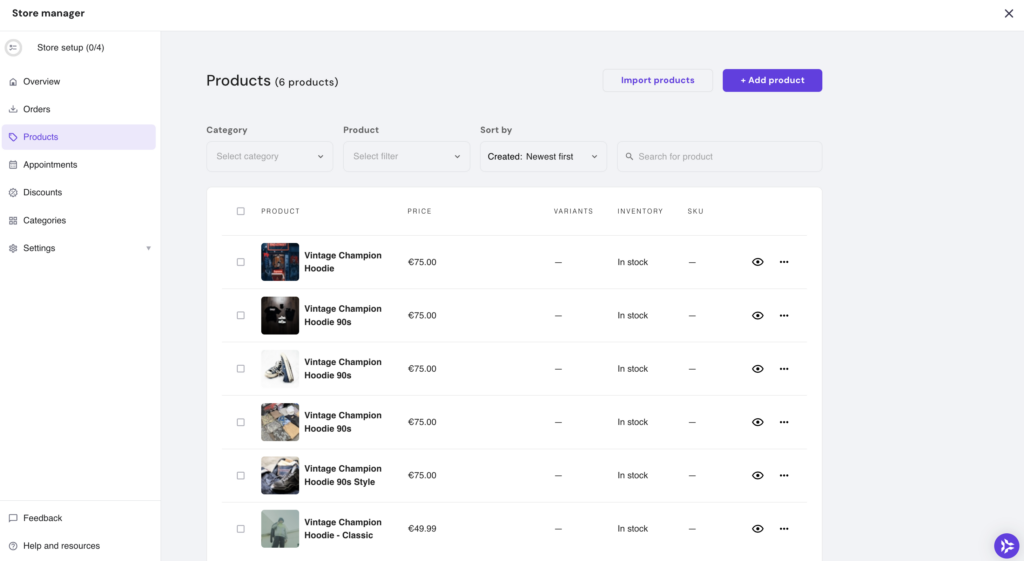
Once you’re done creating your site, you’ll need a domain name to actually get it online. You can connect your domain name if you already have one, but Hostinger also lets you pick a new domain and offers hosting plans, covering all technical aspects like website security and performance.
In addition to managing a website, you can use other channels to attract more buyers and promote your brand.
For example, publish your listings on various fashion marketplaces offering hand-made, vintage, and designer items:
- Etsy – perfect for true vintage pieces (20+ years old) with a strong collector base willing to pay premium prices
- Depop – attracts Gen Z and young millennials looking for Y2K and ‘90s streetwear
- Poshmark – Community-focused platform, great for mid-range vintage and designer pieces
- Vinted – a growing marketplace offering used clothes, popular in Europe, but with an increasing US presence
- eBay – works well for rare vintage finds through auction-style listings
- thredUP – online consignment store requiring bulk shipping but reaching wide audiences
- The RealReal – high-end consignment platform with authentication services
- Vestiaire Collective – global marketplace focused on designer fashion
- Grailed – specializes in high-end streetwear and designer menswear
Here’s what the vintage clothes listings look like on Etsy:
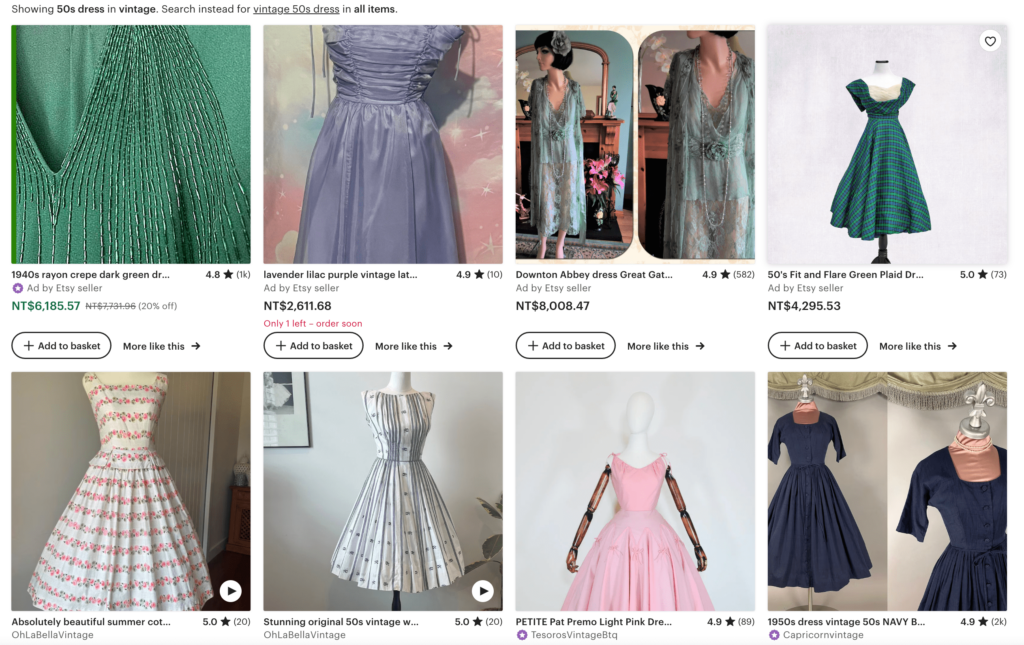
Finally, let’s not forget the power of social media.
Instagram’s visual focus makes it ideal for showcasing your pieces and driving traffic to your site, while TikTok can help items go viral. Facebook Marketplace and local buy/sell groups also work well as an extra channel to promote your items.
Here’s how the We’re Project vintage store creates social media content to build an online audience:

3. Take high-quality photos
Great photos sell vintage clothing faster –they prove authenticity and help customers feel confident about your items’ condition.
Let’s look at how to create professional-looking shots without expensive equipment.
Setting up your space
First things first, you’ll need to find a place to take pictures. It doesn’t have to be a complex studio setup.
Instead, find a clean wall or create a simple backdrop using a white sheet –and use your smartphone camera or a DSLR camera to take pictures.
The key is good lighting – natural daylight works best. But you can also use clamp lights from your local hardware store bounced off the ceiling for soft, even lighting. Alternatively, look for photography lights on online marketplaces, like this lighting kit on Amazon:
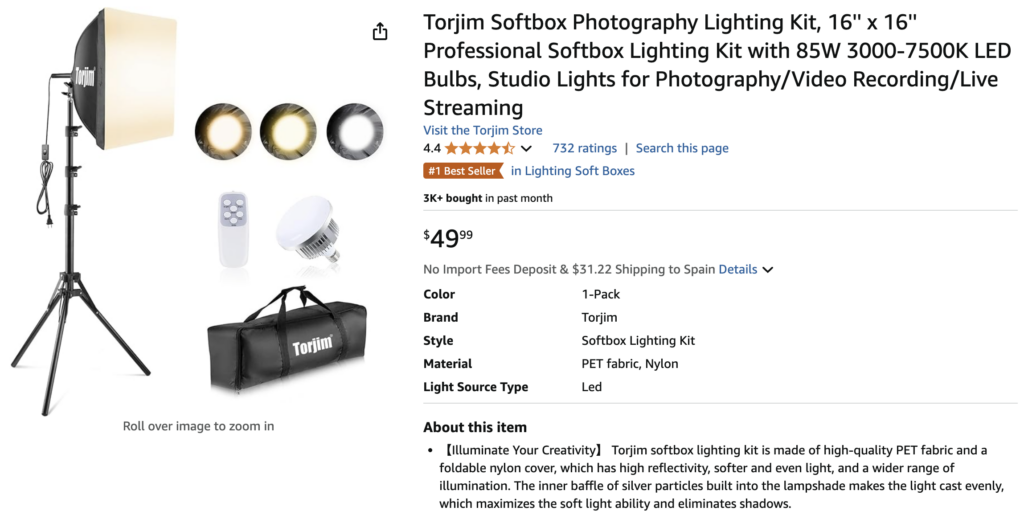
If you want something more compact, try a tripod stand with a ring light, like this one:
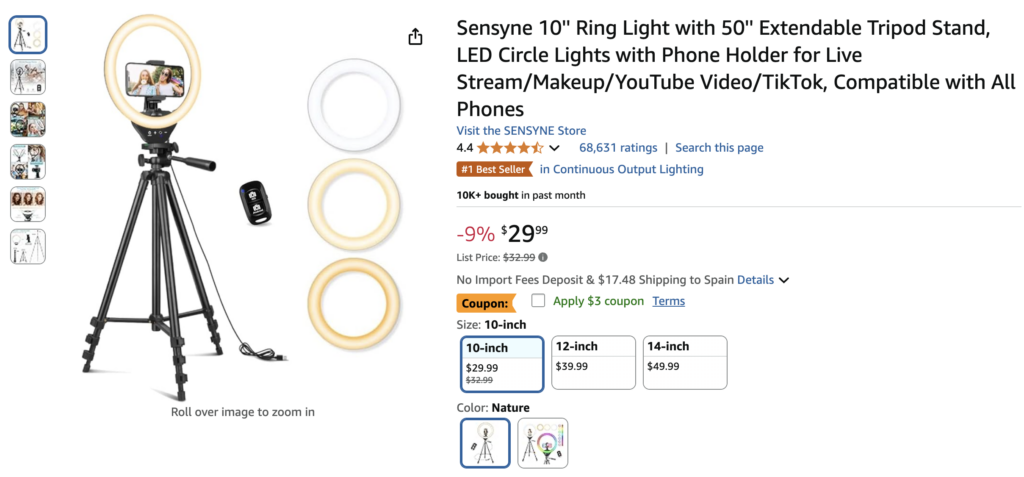
For challenging items like all-black or all-white pieces, try photographing during the “golden hour” (early morning or late afternoon) when natural light is softer, and use a contrasting background. Here’s an example of how this can be done:

Some sellers also use short video clips to show how the garments move or to highlight special details. This is particularly useful for pieces with unusual textures or sparkly elements. Check this example of a video listing on Etsy.
Remember to take pictures of your item from every possible angle, including detailed shots of the fabric and various features. It’s also a good idea to showcase the garment using real-life models or mannequins rather than simply hanging it on a wall.
Here’s an example from Worn Vintage:

Showing authenticity
Next, make sure to provide specific details that prove a piece is genuine:
- Capture close-ups of labels and union tags
- Show construction details like metal zippers or single-stitch hems
- Document any maker’s marks or size stamps
- Highlight unique fabric textures and patterns
Here’s how the We’re Project vintage shop shows each item’s original label:

Documenting condition
Lastly, be thorough about showing both the good and the not-so-perfect to build trust with your customers. Here’s what you can do:
- Take clear photos of any wear, repairs, or imperfections
- Include measurements in your shots with a measuring tape visible
- Show the garment in natural lighting to capture the true color and texture
Here’s another listing on eBay that shows the item in detail, helping the buyers feel more confident about ordering online:
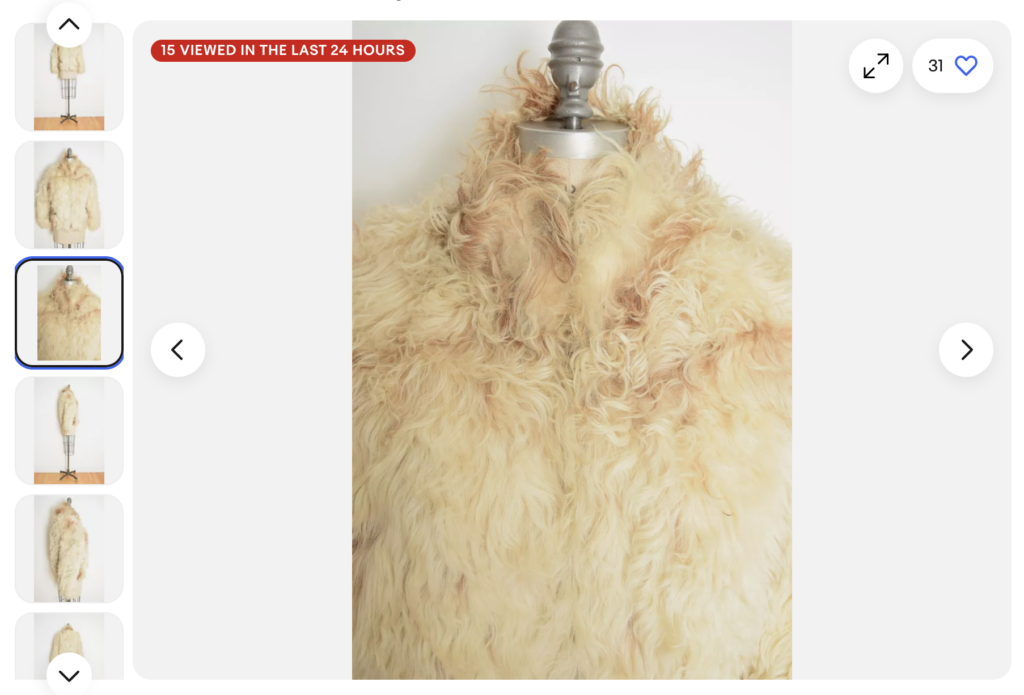
4. Write clear descriptions
Next, write compelling descriptions for your vintage clothing items. Detailed product descriptions help buyers find the exact pieces they’re looking for and make informed buying decisions.
First, list the primary keywords you want to include in your listing. This will help potential buyers find your pages — whether through Google search or on a reseller website — since many customers use keyword searches rather than browsing categories.
For example, a description might include keywords like “vintage 1920s dress,” “wrap-style dress,” and “black and gold lace” to cater to relevant searches, like in this example from 1stDibs.

From here, start listing the key facts about the clothing piece, including:
- All measurements, since vintage sizing can differ from modern
- Material, construction details, and labels
- Care instructions and any known history
- Brand information and era, if you’re certain about it
- Information about what makes the item unique: details that show authenticity (like metal zippers), special features, any historical context
Here’s a great example of a listing that provides all sorts of details, helping users make the decision faster:
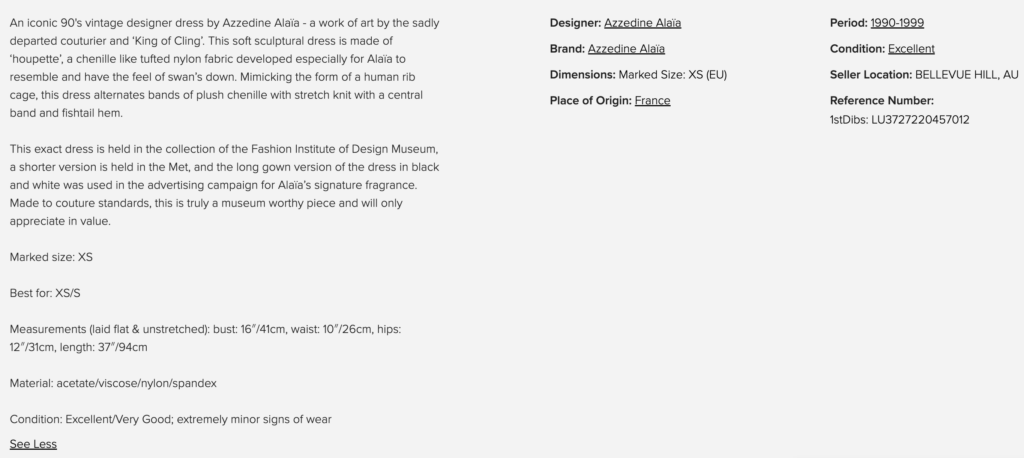
Finally, you need to be completely honest about the condition of each piece to ensure transparency. Clearly describe any flaws, document previous repairs, and note any issues that could affect how the piece can be worn.
A certain level of physical wear is expected for vintage items, and being upfront about it will help you establish a reputation as a trustworthy seller.
5. Price your vintage clothing items
Now it’s time to price the pieces in your collection.
To get started, research market prices in relevant categories on marketplaces like eBay and Etsy. Look for similar brands, styles, materials, and other factors.
Ask yourself: Are these items similar to yours? Is your piece in better condition? Use these insights to guide your initial pricing strategy.
For example, designer clothing is typically priced at the higher end based on the brand and the condition. If you’re selling vintage designer pieces, look at established vintage luxury retailers to understand current market rates for similar items. This will help you position your pieces competitively while maximizing their value.
Make sure to consider these key factors when setting your prices:
- Rarity – one-of-a-kind or hard-to-find pieces can be offered for premium prices
- Age – generally, older pieces (especially from sought-after eras) can be priced higher
- Condition – items in excellent condition can also be priced higher, while those with visible wear would normally be sold for less
- Brand/Designer – luxury vintage brands or designer pieces also sell for more
- Current trends – if the style of your piece is currently trending, you can also price it higher
- Operational costs – factor in cleaning, repairs, photography, and shipping supplies to make sure you’re making a profit
6. Prepare and handle shipping
Finally, you’ll need to create a safe and efficient process for shipping the sold items.
First, look for a shipping provider like USPS, FedEx, or UPS that makes the most sense for your area and needs. For example, USPS Priority Mail is a great option as it offers tracking, insurance, and free shipping supplies like boxes. You can pick these up at your local post office or order them online.
Here’s how to pack and ship vintage clothing:
- First, wrap the item in regular white tissue paper (like gift wrap tissue)
- Put it in a clear plastic bag – a clean shopping bag or large zip-lock works fine
- For coats and dresses, use a Medium USPS Priority box
- For t-shirts and light items, use a poly mailer bag
- Add insurance for anything over $50 in value
Finally, include a simple note with washing instructions like “dry clean only” or “hand wash cold,” and a thank-you card. This adds a nice personal touch and improves the customer experience, like in this example from Etsy:
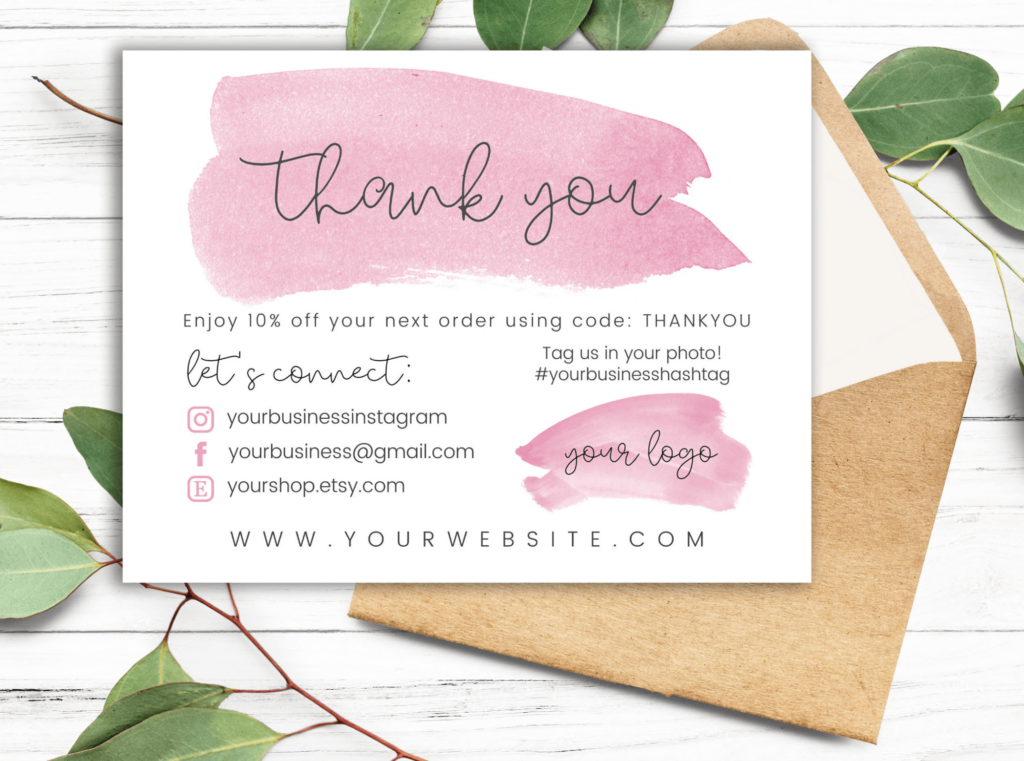
It’s also important to add clear shipping policies to your site. Specify how long it takes to ship, what countries you’ll ship to, and your return policy.
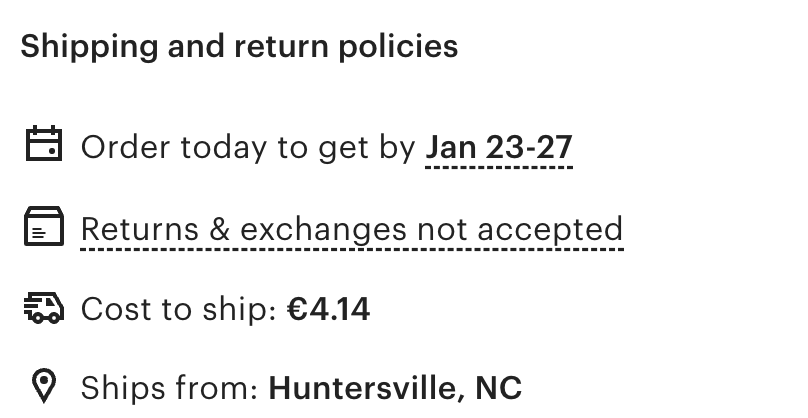
Market your vintage clothing store
Setting up your vintage clothing business is just the beginning. You’ll also need to use various marketing channels and tactics to attract shoppers to your online store.
While the competition can get tough, you can differentiate yourself by targeting the right audience with relevant messaging and product offerings. It’s essential to know your niche and organize your marketing activities accordingly.
For example, are you after Gen Z buyers looking to buy trending ‘90s items? Then platforms like TikTok and Instagram should be your primary focus.
Or perhaps you specialize in high-end vintage designer pieces? In that case, you might want to focus more on building an email list of serious collectors.
Here are various channels and marketing activities you could try:
- Social media marketing. Visual platforms like Instagram and Pinterest are essential for vintage clothing. Post daily “new finds,” share styling tips, and announce promo campaigns.
- Email marketing. Build a loyal customer base through weekly newsletters announcing new inventory drops and important trends. Offer subscribers early access to new items and exclusive discounts to encourage repeat purchases.
- Multimedia content creation. Create articles and video content about vintage fashion history and care tips. This positions you as an expert and helps you get organic traffic from search engines.
- Influencer partnerships. Connect with vintage fashion influencers who can showcase your pieces to their followers. This helps you access original content and reach new audiences.
- Community building. Host local vintage fashion events or pop-ups to connect with customers in person. Join vintage seller groups on Facebook to network and collaborate with complementary businesses like estate sale companies.
- Digital advertising. Use targeted social media ads to reach potential customers interested in vintage fashion. For example, you can use content created with influencers for your ads and drive traffic to your website product pages.
For instance, Avoke Vintage – a US-based vintage shop – actively uses Instagram to reach its target customers.

On the other hand, Worn vintage store, focused on higher-end items, encourages customers to sign up for its newsletter to get a discount and stay updated on new arrivals.

Conclusion
Starting a vintage clothing business in 2025 requires both an eye for authentic pieces and mastering ecommerce best practices. You’ll need to:
- Find authentic pieces from multiple sources like estate sales for curated collections, thrift stores for hidden gems, and online auctions for rare finds
- Build your brand, starting by creating a website, and expand to various marketplaces and social media platforms
- Take pictures that sell your items and build trust with potential buyers
- Write transparent and detailed descriptions that help customers find your pieces and provide the essential information
- Set competitive prices that take into account the current market trends and each piece’s specifics
- Handle packing and shipping carefully to protect delicate vintage pieces
The key to success? Find your niche, understand your customers, and treat each sale professionally to build a reputation for your online vintage store.
Sell vintage clothing online FAQ
How to scale a vintage clothing business?
To scale your online vintage business, expand your sourcing channels beyond local thrift stores to find more unique pieces. Build relationships with various suppliers like estate sale companies, flea market vendors, and online auction sites. As your inventory grows, consider moving from home storage to a dedicated space and build an inventory of at least 100 items, creating “streams” of popular items. For example, when you sell a 1920s dress, immediately list another one to maintain visibility. Finally, consider hiring help for tasks like photography, marketing, and shipping.
How can I build a brand for my vintage store?
Look at what excites you most about vintage clothes. Maybe you love finding and restoring damaged designer pieces, or perhaps you want to curate trending Y2K collections. Use that passion to shape your store’s identity – from how you photograph items to how you describe them. Share your knowledge about the pieces’ history and care, and be honest about condition issues. Customers connect with sellers who genuinely love what they’re doing.
Is selling vintage clothes profitable?
Selling vintage clothing online can be profitable, but it requires a smart sourcing strategy and realistic pricing. You’ll need to factor in all your costs – like cleaning, repairs, photography, and shipping supplies. Research similar items on marketplaces like eBay and Etsy to understand current market rates. Some pieces might sit for months before finding the right buyer, while others might sell immediately for a significant profit. The key is building enough inventory to create consistent sales while maintaining healthy margins on each piece.




